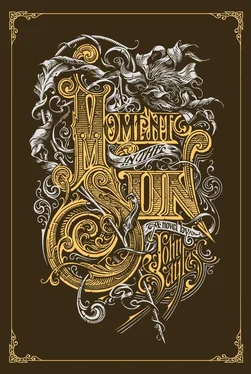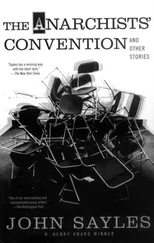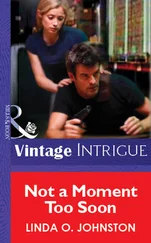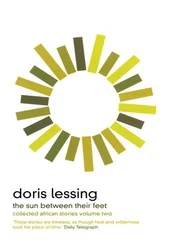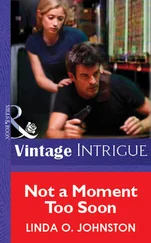The woman who answers the door seems frightened at the sight of him.
“Who send for you?”
“No one, but I—”
“She not dead.”
“I am a medical man, not an undertaker.” He holds the bag up where she can see it. “If you’ll let me in perhaps I can be of some service.”
There are lighted candles in the first room, one placed carefully next to a tiny chromo of the Virgin Mary. The woman wears a red cloth wrapped like a turban over her hair and sports a large crucifix, carved from yellowish wood, outside of her housedress. Catholics, Dr. Lunceford guesses, up from somewhere in Louisiana. Two very small children, a boy and a girl, play on the bare, sticky floor with a stewpot and a wooden spoon, while a child not yet a year old squats half-immersed in soapy water in the stone basin that also serves for kitchen needs. A girl of perhaps eight years stands by the half-open curtain that separates their two rooms.
“You wash the baby,” the woman says to this girl. “This man gone look at Essie.”
Essie lies on the larger of the two beds crowded into the back room, a cracked window affording her a view of the grimy brick airshaft and the trio of pigeons nodding sleepily on the sill. Sound asleep, on the other bed, is a fully clothed man of about thirty.
“That Mr. Ball,” says the woman softly. “He work nights, so we rents a bed to him.”
Dr. Lunceford feels very tired, though it is only eleven in the morning. Too many stairs. “Hello, Essie,” he says.
The girl, possibly as old as twelve or thirteen but wasted with disease, does not respond, her huge, frightened eyes following as he squeezes between the beds and steps to her side. She is propped on a pair of yellowed cushions, her neck swollen, breathing noisily and with extreme difficulty. Dr. Lunceford lays his palm on the girl’s forehead.
“How long has she had this fever?”
“She been po’ly more than two weeks now,” says the woman. “Her daddy, he work loadin the boats, he been to the hospital but they won’t send nobody.”
“There are visiting physicians.”
“Suh, we just come up here. We can’t affo’d none of that.”
Dr. Lunceford nods. “Would you bring the lamp over, please?”
The woman squeezes in next to him, holding the oil lamp. “First she tired all the time, then she coughin, and then she can’t even swallow.”
“Would you open your mouth for me, Essie? Wide, like when you have to yawn—”
It clearly causes the girl some pain to open.
“And could you hold the light closer, please?”
The next time I see that thief, thinks Dr. Lunceford, I’ll have to ask him to purloin a laryngoscope. He pushes her tongue down with a depressor and inserts the little ball of a mirror as far in as he can get it. The tonsils, uvula, and pillars of the fauces are all swollen, covered by the grayish pseudo-membrane, which extends up to the posterior nares and down over the epiglottis and into the larynx. The membrane is relatively thick, adhering tightly to the mucous membrane in most places, the windpipe nearly completely occluded. It is a wonder the girl can breathe at all.
There is only one course open to him. Her pulse is weak and irregular, the exudation, though not yet gangrenous, beginning to slough off and spread the sepsis. Five years ago she would be doomed, his role limited to supplying enough opiates to allow her to leave on a cloud. But there is an anti-toxin now, manufactured by the Board of Health itself, a serum he has no access to.
Dr. Lunceford touches the girl’s cheek lightly. “You can close for a moment, Essie. Thank you.”
“That look bad, don’t it?”
He turns to the mother. “I will need some alcohol — three inches’ worth, in a glass. It doesn’t matter what sort.”
The woman leaves and Dr. Lunceford sits on the side of the bed. There is an illustration of Christ on the cross, torn from a newspaper and at some point folded many times, tacked to the wall over the headboard of the bed. The folding has left the image divided into many squares, each one featuring an isolated locus of agony — a spiked and bleeding palm in one square, a section of thorn-pierced hairline in another. The effect makes it seem as if one of the Savior’s eyes is raised to Heaven and the other, with a glint of challenge rather than supplication, squarely fixed on Dr. Lunceford.
And what shall you do for My lamb?
“It’s hard to breathe, isn’t it?”
The girl nods weakly.
“We’ll try to do something about that.”
The smallest boy is out of the basin, being wrapped in a blanket by his sister, and the woman is pouring gin from a square bottle into a glass. A hinged wooden lid has been lowered over the washbasin and there is a huge pile of dusty field greens spread out on it.
“She gone die?”
“Your daughter is very ill, but there are things that can be done for her. The first and most vital is to make sure her breathing is unimpeded. There is a procedure I will need to perform, and I need your permission to go ahead with it.”
It is a matter for the Board of Health, of course, but by the time their representatives arrive the girl will be gone. In a race between the Klebs-Loeffler bacillus and city bureaucracy, there is no question as to which will win.
“You gone cut her?”
“No, M’am, but she will be made very uncomfortable for a short while.”
The woman holds out the glass of gin to him, which he takes as acquiescence. Dr. Lunceford stacks several bottles of the Brain Food on the table in order to gain access to his instruments. The woman stares at the bottles. Women such as these, feeding their children on pork fat and road-clippings, are the principal consumers of the Bonkers elixir, and for an instant he feels ashamed to be associated with it. He slips the metal instruments he’ll need from the pocketed canvas roll and stands them up in the alcohol. He has only one O’Dwyer tube, medium-sized, something the hospital thief threw in for free with no idea of its purpose.
“We just come up here,” the woman says again, shaking her head. “Didn’t count on nobody getting sick.”
He has performed the intubation dozens of times, often on infants, in the days before the serum. Very few of those children survived. He pushes the tongue to the side with his curved forceps, then uses them to help guide the tube past the epiglottis and into the larynx, the girl heaving and gagging despite his care not to press on the vagus nerve. Her sputa, fine and poisonous, spray upon the lenses of his spectacles. The tube is brass covered with rubber, not very flexible, and when it is in place he tugs very slightly on the thread to be certain that the retaining swell is anchored below the vocal chords. When he leans away with the device in place the girl is soaked with sweat, but her dyspnea has been vanquished, her chest expanding and contracting heroically.
“Just breathe normally,” he tells her, tying the thread around the stub of a pencil. “There’s plenty of air for you now. And if you should begin to swallow the tube, which can happen sometimes, you can pull on this and cough and it will come out.” He hands her the pencil, then touches her face again. “You’re going to feel better now.”
In the kitchen he scrubs his hands with carbolic soap, gargles with Condy’s fluid and carefully cleans his spectacles. He explains to the woman that her daughter should be fed in a supine position with nothing more solid than rice with milk, that she will likely fall asleep immediately, her body sensing that strangulation has been circumvented. He does not tell her the rest. If you warn them the authorities are coming they are likely to hide things, and the bacillus continues to travel. She makes the sign of the cross in the Catholic manner, thanking God several times and Dr. Lunceford once.
Читать дальше
